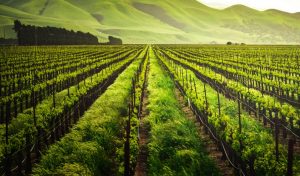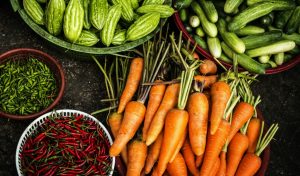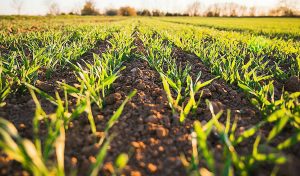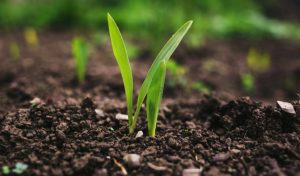Meaning And Types Of Agriculture: Agriculture is among the oldest forms of employment, and it is still quite profitable today. The term “agriculture” comes from two Latin words: “ager” or “agri,” which means “soil,” and “cultura,” which means “soil cultivation.” Agriculture, in contemporary terminology, is the art and science of cultivating the land, planting crops, and raising livestock for human use and economic gain. Farm animals are animals that are raised or may be reared.
It comes from the Latin words ager, which means soil, and culture, which means cultivation. It’s a comprehensive phrase that includes agricultural production, horticulture, animal husbandry, forestry, and fisheries, among other things.
Foods, textiles, biofuels, and raw materials are the four primary agricultural products. Grains, vegetables, berries, oils, meat, milk, eggs, and fungus are only a few of the food categories.

Agriculture employs about one-third of the world’s workforce, only behind only the service industry despite the fact that the worldwide trend of a falling number of agricultural employees has continued in recent decades. This is common in emerging nations, as small scaled agriculture is now substituted by industrial agriculture and technology, which increases crop yields dramatically.
Recommended: Most profitable agricultural businesses to start in 2022
Benefits/Importance of Agriculture

1. Source of food for humans: Agriculture is the basis of the global food supply, which is among the most essential aspects of the industry. Everything edible comes from the farm, regardless of the mix-up; if you follow the trail back to the source, you’ll find yourself at the farm. Agriculture is at the crossroads of all routes. It’s because their agriculture sectors are struggling in countries coping with food shortages and severe malnutrition. Fewer people go hungry while agriculture grows.
2. Employment opportunities: Agriculture will never become obsolete as a source of income and employment. There’s always a work for you, and you don’t need a lot of schooling to be a successful farmer. Have you considered farming if you’re young and still looking for work? There are several fields in which to specialize and live happily ever after.
Also see: Qualities of a Good Woman: 10 Attributes to Look Out For
3. Raw materials: Agriculture provides many raw materials, such as cotton, sugar, wood, palm oil, hides, rubber, and so on. Pharmaceuticals, diesel fuel, plastic, and other big businesses rely on these elements in ways that many people aren’t aware of. Raw materials are so vital in manufacturing that a country’s economic health is largely determined by how many raw materials it has.
4. Drives Innovation in Technology: Agriculture has been the site of some of the most fascinating technological advancements since it is so important to a country’s well-being.
Scientists and farmers have been working out ways to boost agricultural output, consume less water, and lessen negative environmental consequences using artificial intelligence, blockchain software, gene editing, and other methods. Agribusiness is among the most exciting and fruitful industries to work in for scientists and tech businesses.
Also see: Most profitable skills to learn currently
5. Contribution to national income: Agricultural prosperity has aided and aided various countries’ economic progress. Even the most developed countries were formerly mostly agrarian, as has been accurately pointed out. Likewise, emerging countries today have a stronghold on agriculture, which accounts for a major portion of their national GDP.
6. Significance in Transport: Agricultural goods are moved in bulk from farms to factories via railways and highways. Internal trade is primarily in agricultural products. Furthermore, the government’s revenue is dependent on the agriculture sector’s prosperity to a great extent.
7. Food Security: A robust agricultural industry guarantees food security for a country. Food security is the most important prerequisite for every country. Malnutrition is prevented by food security, which has long been seen to be one of the biggest concerns facing poor countries. The majority of countries rely on agricultural goods and related businesses as their primary source of revenue.
Also see: Major Classification of food
Types of Agriculture

Consider the difference between a tiny family farm and a large commercial farm that covers hundreds of acres. What do you believe distinguishes these two kinds of farms? Despite the fact that each of these farms are meant to generate food, the methods of production, the amount of food produced, and who consumes the food produced differ.
The act of cultivating crops and raising livestock for human consumption and use is referred to as agriculture. Many various forms of production have been implemented since the birth of agriculture. Agriculture is currently separated into two categories: industrialized agriculture and subsistence agriculture. Let’s look at these two sorts of agriculture and learn more about them.
Recommended: Causes, Effects and Solutions to Conflict in Africa
1. Industrialized Agriculture
Industrialized agriculture is a kind of agriculture in which massive volumes of crops and livestock are grown for the purpose of selling using industrialized procedures. Crop yield, or the quantity of food produced per unit of land, is the objective of industrialized agriculture. Crops and cattle raised in this manner are used to feed the masses, and the goods are marketed all over the world.
Because of the agricultural practices utilized in industrialized agriculture, vast amounts of food may be produced. Instead of utilizing animals and humans to cultivate the grounds, industrialized agriculture employs big machinery that are more robust and capable of working quicker and longer. Because the transition to machines has increased the usage of fossil fuels on industrial farms, food prices can fluctuate as oil prices fluctuate. Crop yields are also increased in industrialized agriculture by investing in extensive irrigation systems and utilizing chemical fertilizers and pesticides.

Also see: How to become a successful lawyer
Inorganic nutrients are frequently added to the soil by chemical fertilizers used in industrialized agriculture to boost production and plant growth. Pesticides are also widely used in industrialized agriculture, and the majority of pesticides aid enhance productivity by eliminating pests that injure or consume crops.
Monocultures, which are large-scale plantings of a single crop, are another agricultural practice utilized in industrialized agriculture. Although establishing monocultures can enhance total productivity, this form of farming is also more sensitive to disease and reduces consumer dietary diversity.
Also see: How to become a successful business entrepreneur
3. Subsistence Agriculture
Despite the fact that industrialized agriculture is required to support the world’s rising population, another sort of agriculture is still being practiced today. When a farmer lives on a tiny piece of land and produces enough food to sustain his or her family while also having a modest income crop, this is known as subsistence agriculture. Subsistence agriculture aims to provide enough food to sustain the individual family’s survival. If there is any leftover food, it is marketed to other households or persons in the area.
The agricultural practices utilized in subsistence agriculture are very different from those employed in industrialized agriculture. Because people and animals perform all of the work, and only hand tools and basic equipment are used to till the land, this style of agriculture is extremely labor-intensive.
Recommended: Advantages and Disadvantages Of Artificial Insemination
Subsistence agriculture avoids the use of artificial fertilizers and pesticides in favor of more natural methods. Animals such as chickens, goats, and cows are common among farmers, and the dung from these animals is utilized to fertilize the plants. The harvested crops are subsequently consumed or sold, and the plant’s inedible components are fed to cattle. This establishes a closed loop within the farm, ensuring that nothing is wasted.
Subsistence farmers rely on natural insect predators to reduce pest populations rather than artificial pesticides. What is planted is another significant distinction between industrialized and subsistence agriculture. Polycultures, as opposed to monocultures, are used in subsistence agriculture. Polycultures occur when multiple types of crops are cultivated in the same region. Polyculture planting is a technique for getting the most crop yield from a small plot of land.
Recommended: Ways of promoting national unity and integrity
Conclusion
Agriculture is beneficial to the economy of every country. Where agriculture isn’t well-managed, hunger will flourish. And keep in mind that everything you eat comes from a farm somewhere, either directly or indirectly.

Edeh Samuel Chukwuemeka, ACMC, is a lawyer and a certified mediator/conciliator in Nigeria. He is also a developer with knowledge in various programming languages. Samuel is determined to leverage his skills in technology, SEO, and legal practice to revolutionize the legal profession worldwide by creating web and mobile applications that simplify legal research. Sam is also passionate about educating and providing valuable information to people.